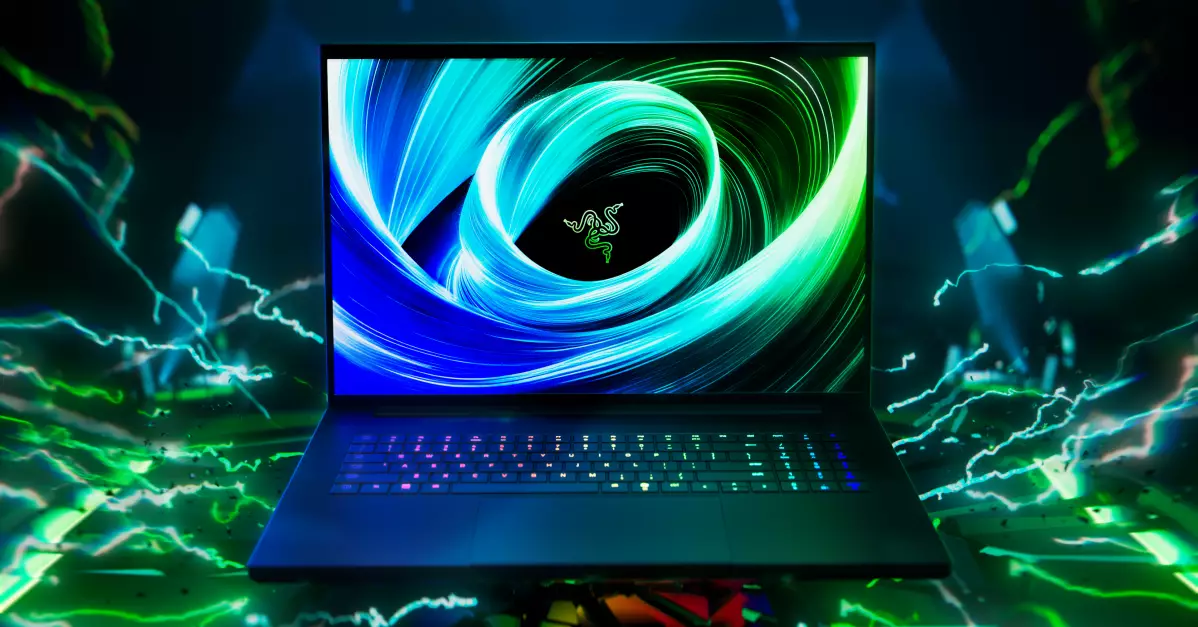The gaming laptop market continues to evolve rapidly, with new models emerging that are designed to deliver exceptional performance and captivating gaming experiences. Among the latest contenders, Razer’s Blade 18 stands out, accompanied by various other notebooks powered by Nvidia’s latest mobile GPUs. This article reviews the recent trends in gaming laptops, highlighting specifications, pricing, competitive offerings, and what the future may hold for this segment of the market.
Razer has long been celebrated for its sleek designs and robust gaming performance. The Blade 18 introduces a sizable 18-inch display that offers dual operational modes: a captivating 3840 x 2400 resolution at 240Hz for immersive gaming and a 1920 x 1200 resolution at an astonishing 440Hz for lightning-fast response times. This flexibility makes the Blade 18 an attractive option for both competitive gamers seeking speed and content creators needing display fidelity.
The pricing strategy for the Blade 18 is noteworthy as well, starting at $3,199.99 for the RTX 5070 Ti variant, which immediately positions it in the premium price segment. Its higher-end model, equipped with the RTX 5090, reaches a staggering $4,499.99. It reflects an industry trend where manufacturers are attempting to blend high-end specifications with exceptional aesthetics while managing consumer expectations on pricing.
Razer isn’t operating in a void; competitors like Asus, MSI, and HP are also rolling out pre-orders for their latest offerings featuring Nvidia’s RTX 50-series GPUs. Asus has taken great strides with its flagship ROG Strix Scar 16, which begins at $3,299.99 with an RTX 5080 and can go up to $4,299.99 for the RTX 5090 model. Their strategy highlights a commitment to both aesthetic appeal, with wraparound RGB lighting, and high performance, appealing to a gamer audience that seeks personalization and flair.
Moreover, the Zephyrus line from Asus demonstrates another layer of consideration, melding gaming prowess with everyday usability. The G14 starts at a respectable $2,499.99 with an RTX 5070 Ti, reinforcing the notion that there’s a gaming laptop out there for every type of user, from casual gamers to professionals.
While the technological advancements in graphics and processing power are commendable, the escalating price tags attached to these gaming laptops may leave many potential buyers on the sidelines. The MSI Titan 18 HX AI, for example, is priced at an eye-popping $5,999.99, signifying a premium that some might argue is unsustainable, especially for mainstream consumers. As gaming laptops increasingly adopt high-end components, they are straying into luxury territory, alienating casual gamers and those on tighter budgets.
In contrast, prices for last-gen models with 40-series GPUs appear comparatively lower, and it may take time for the market to adjust to the new pricing structures. With gaming trends fluctuating and new gamers entering the scene, manufacturers may eventually need to reconsider their pricing strategies to remain competitive. As seen in previous cycles, price drops often follow the launch of new hardware generation, leaving consumers hopeful for more accessible options in the near future.
The anticipation surrounding the new RTX 50-series mobile GPUs is palpable, with the hope that they will outperform their predecessors significantly. However, there are potential pitfalls. The desktop variant has faced scrutiny over subpar improvements and manufacturing missteps, leading to concerns whether mobile versions will carry similar challenges.
Moreover, the gaming laptop market must also grapple with increasing expectations from consumers regarding performance, heat management, and battery life. As games become more demanding, the technology must evolve accordingly. Companies focusing on user experience—balancing performance, weight, and aesthetic design—are likely to be favored by consumers seeking a holistic gaming solution.
As gaming laptops like the Razer Blade 18 and its competitive counterparts hit the market, they are prompting both excitement and skepticism among consumers. The blend of cutting-edge technology with high price points could shape the future landscape of gaming laptops, necessitating careful navigation by manufacturers and understanding by buyers. Only time will tell how this dynamic will unfold, but for now, the high-end gaming laptop market is undeniably vibrant and filled with potential.

